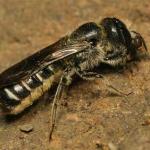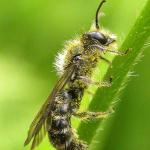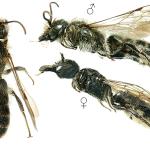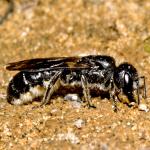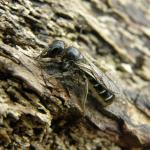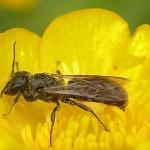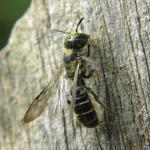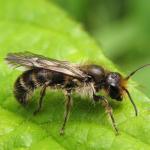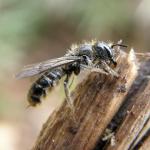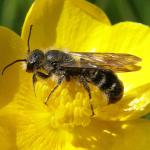Apis maxillosa LINNAEUS 1767; Chelostoma culmorum LEPELETIER 1841; Heriades parumcrinitus ALFKEN 1932
A larger version of the more frequently encountered C. campanularum; of the same general long, thin cylindrical shape, but with distinctive white bands of short hairs on the apices of the abdominal segments.The males also have a two-pronged peg on the final segment of the abdomen and this may be used in the same way as that on the males of C. campanularum. However, I have only ever found males curled up around the base of the stamens of buttercups during poor weather, apparently relying on the closure of the petals to shelter them.
More widely distributed than its sister species, being found throughout England and Wales.There are no substantiated records for Scotland or the Channel Islands. It is, however, sporadic in occurrence. Widespread in Europe, and is also found in North Africa.
This bee is not regarded as being scarce or threatened.
Most often associated with the interface between woodland and meadow where buttercups are present. It has been recorded nesting in thatch, but is not a regularly-found bee in gardens.
Univoltine; May to July.
Nests in old beetle burrows in dead wood, this may be quite firm, or fairly rotten, as long as it is in the sun. It may also use thatch and possibly similar, naturally-occurring cavities, such as old reed-stems, elsewhere.
Very strongly associated with the flowers of Ranunculus.
The Sapygid wasp Monosapyga clavicornis is well-known to be associated with this bee.The Evaniid wasp Gasteruption jaculator, a general parasitoid of wood-nesting aculeates, has been reared from nests of C. florisomne.
Profile written:
Proofed: January 2012


